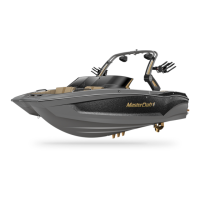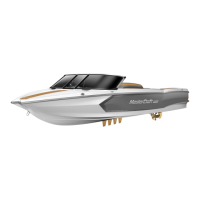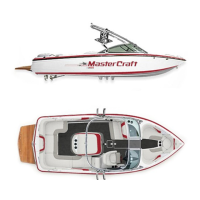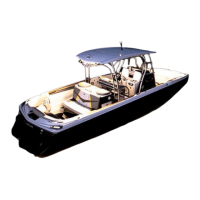AVIARA OWNERS MANUAL / 102
diameter and pitch. The propeller supplied on the boat
was chosen for best all-around performance under
average operating conditions.
Load, weather, altitude and boat condition all affect WOT
engine operation.
Propping the boat should be done after the boat is loaded
in the manner in which it would normally be loaded for
each application. Add the people and gear that normally
would be expected in the boat. Take the boat out and
after warm-up, run it at wide-open-throttle and note the
maximum RPM. EFI engines are equipped with RPM
limiters to prevent over-revving. Take note if the RPM
limiter is activated.
If the WOT RPM is higher than the maximum RPM in
your engine’s WOT operating range, the boat is under-
propped. Installing a higher-pitched propeller will reduce
the WOT RPMs. An engine that is over-revving may
quickly experience catastrophic damage, which will not be
covered under warranty.
If the WOT RPM is lower than the minimum RPM in
your engine’s WOT operating range, the boat is over-
propped. Installing a lower-pitched propeller will increase
WOT RPMs.
An engine that is under-revving is “lugging.” This places a
tremendous load on the pistons, crankshaft and bearings and
can cause detonation, piston seizure and other engine damage,
which will not be covered under warranty.
Engines should always be operated within engine manufacturer
guide lines. Failure to do so may cause significant damage to the
engine and drive train and is not covered under warranty!
Elevation and weather also have a very noticeable effect on
the wide open throttle power of an engine. Since oxygen gets
thinner as elevation increases, the engine begins to starve
for air. Humidity, barometric pressure and temperature have a
noticeable effect on the density of air since heat and humidity
thin the air.
This phenomenon can become particularly apparent when
an engine is propped for use on a cool, dry day in spring and
then is operated on a hot, humid day in summer, and does not
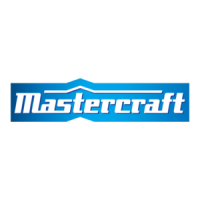
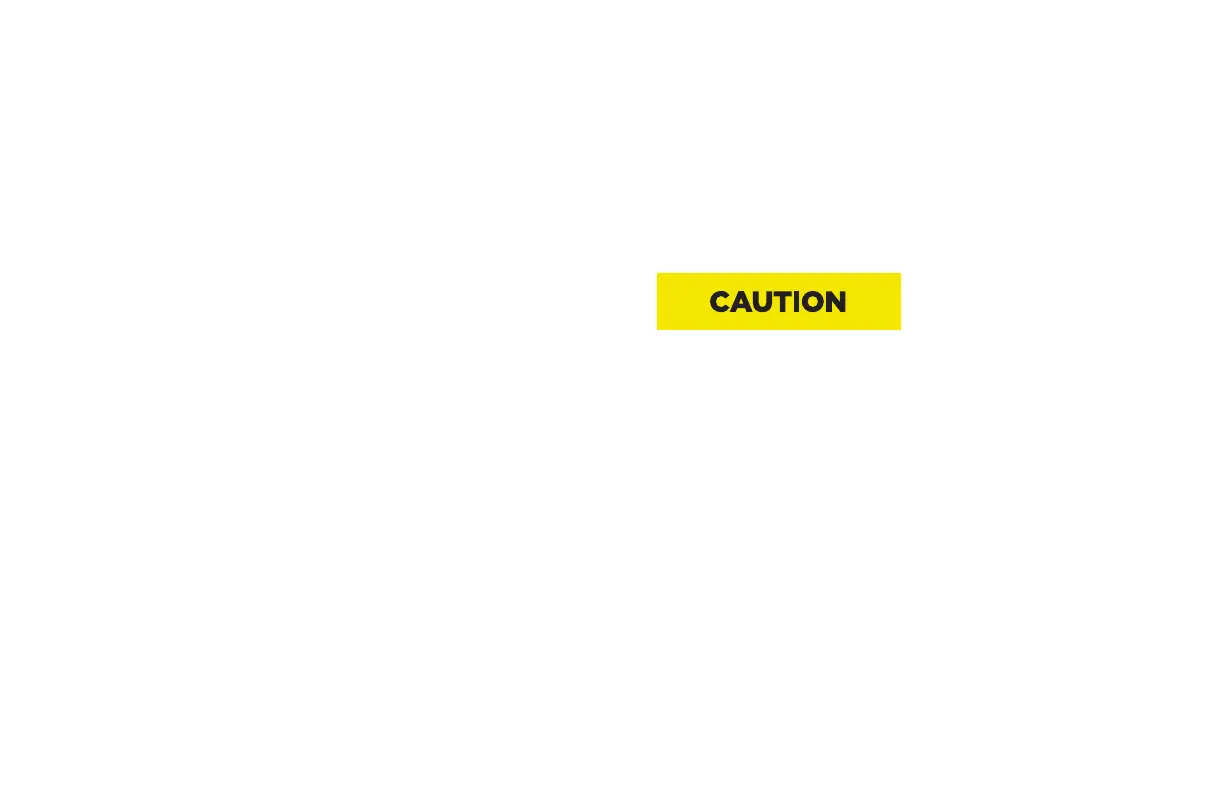